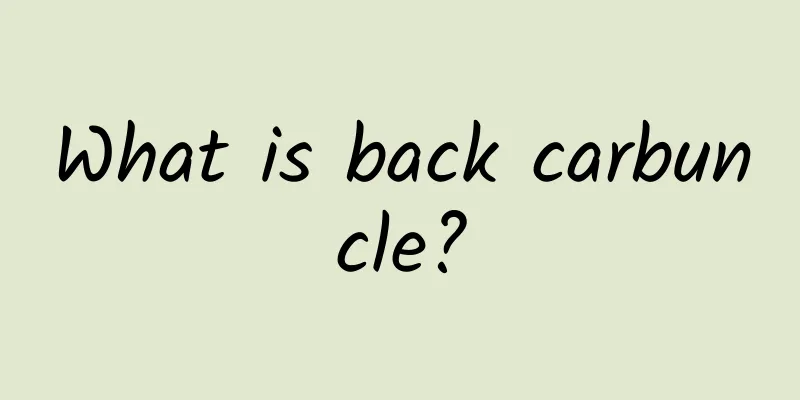How much do you know about the functions of sunscreen products?

|
Sun protection is the most important step in whitening and skin care in people’s daily life. If you want to have fair, tender and delicate skin, you must always do a good job of sun protection. However, there are differences between the sunscreens and isolation creams we use daily, and their skin protection functions are also different. Sunscreen is divided into physical sunscreen and chemical sunscreen, they have their own advantages and disadvantages. Physical sunscreen fundamentally eliminates ultraviolet rays safely and healthily, while chemical sunscreen does not make the skin feel heavy, but it needs to be applied for a long time to give full play to the sunscreen function, which can make our skin better and better. In order to have fair, tender and delicate skin, female friends who love beauty should take action quickly and protect themselves from the sun. 1. The formula of sunscreen and isolation cream itself But in the product catalogs of most cosmetic companies, isolation and sunscreen are two completely different things. The reason for this is largely due to the approval system! Sunscreen is a special cosmetic that needs to be labeled with SPF value or PA value. Products that can be labeled with SPF or PA values require a long testing and approval time. However, there is no strict requirement for isolation cream to be labeled with a sun protection value. A isolation cream may have a sun protection function, but it may also not have a sun protection function. It depends on the brand's market positioning and what products they want to produce. 2. What are the ingredients of isolation cream? If we want to know whether isolation can be used as sunscreen, we must first understand the ingredients of isolation and sunscreen. The main ingredients of isolation cream are titanium dioxide and zinc oxide, which are physical powders. Therefore, most isolation creams have a certain finishing effect, and this function is related to these two powders. Titanium dioxide is called titanium dioxide, zinc oxide is also called zinc white. Nowadays, major brands all use microcrystalline zinc oxide, so the phenomenon of "very white" isolation cream when applied has been reduced. Some manufacturers will add green, purple or pink pigments to the isolation to make the isolation appear in different colors. This is what we often call isolation that can adjust skin color, and it is also the most common isolation on the market. When the content of titanium dioxide and zinc oxide in the isolation reaches a certain ratio, the isolation in your hand will meet a certain sun protection standard, so it will be marked with the corresponding SPF value and PA value. However, some isolation creams only increase the proportion of titanium dioxide. In this case, the SPF value can only be marked on such isolation creams, which means that they only protect against UVB, but basically provide no protection against the most important UVA. So to put it bluntly, isolation cream is a physical sunscreen. 3. What are physical sunscreen and chemical sunscreen? There are two types of sunscreen: physical sunscreen, chemical sunscreen, and physical + chemical sunscreen. Adding physical sunscreen ingredients will have a moisturizing effect, while using only chemical sunscreens will result in an ordinary emulsion. Physical sunscreen Physical sunscreen uses reflective particles and physical covering to block, reflect or scatter ultraviolet rays, thereby reducing the amount of ultraviolet rays reaching the skin to achieve the purpose of sun protection. Physical sunscreens usually stay on the surface of the skin and do not react chemically, so they are gentler on the skin. advantage The advantages of physical sunscreen are high safety and good stability. It can provide sun protection the moment it is applied without waiting, and it can reflect ultraviolet rays for a long time. As long as you do not sweat or wipe it, the sun protection effect can be maintained. No chemical reaction occurs, so it is gentle on the skin. shortcoming The disadvantage of physical sunscreen is that its texture is slightly thick, and it is easy to turn white when applied on the skin surface and easily clog pores. Chemical sunscreen The mechanism of action of chemical sunscreen is to use other film-forming substances to form a UV-absorbing barrier on the skin surface, absorbing and neutralizing it to prevent it from penetrating into the skin. advantage The advantage of chemical sunscreen is that it has a light texture and is non-sticky, and the skin does not feel heavy after application. shortcoming The disadvantage of chemical sunscreen is that it has poor photostability and needs to be reapplied repeatedly under long-term sunlight exposure. Moreover, if you choose a sunscreen containing lead or mercury, long-term use will cause skin dependence and damage skin cells and structures. Now that we have clarified these two questions, the next thing we need to solve is: What is the difference between UVA and UVB? What is the difference between UVA and UVB? Ultraviolet rays are divided into two types: UVB and UVA. UVB can cause sunburn and redness on the skin in a short period of time (about 25 minutes for most people). Currently, most sunscreens on the market are UVB type, which is what we just called physical sunscreen! SPF is a symbol of UVB protection. UVA is a terrible sun killer. With its relatively long wavelength and strong penetrating ability, it can directly reach the surface of the skin and penetrate into the tissues below the dermis, thereby destroying collagen, elastic fiber tissue and other micro-structures inside the skin, causing wrinkles and fine lines, and making the skin loose and aging. The protection index against this kind of radiation is generally expressed in PA. In sunlight, the energy distribution of ultraviolet rays is 15 times that of UVA, which is the main cause of skin tanning. It can reduce the content of hyaluronic acid that binds water in the skin, making the skin dry, accelerating the formation of melanin, and darkening the skin color. It is also an important cause of skin cancer. People have found that when UVA from sunlight of normal intensity shines on the skin, after about 2-4 hours, the skin will turn into a relatively stable darkening, which is academically called "persistent instant darkening." In short, UVA is more terrible than UVB. |
>>: Is vanillin harmful to the baby's body?
Recommend
What to drink to get rid of acne
For girls, having acne on the face is a heartbrea...
What causes headaches and nausea?
The human body is amazing. When it is stimulated ...
Can Astragalus be soaked in a thermos cup?
Soaking Chinese medicine in water is one of the m...
How to quickly reduce swelling in feet
Many people will experience symptoms of swollen f...
Why does my knee make a cracking sound when I stretch my legs?
Everyone must often encounter the situation of cr...
What causes urethritis in men?
The structure of women's lower body is very d...
How did Xie Na strain her ligament?
Most people who love sports will suffer some phys...
Right kidney cystic lesion
Right renal cystic lesions are a disease that mai...
Can scorpions and Ganoderma lucidum be used to make wine?
Scorpions and Ganoderma lucidum can be soaked tog...
If a woman is touched by a man during her menstrual period, she might die early!
There are many things that women cannot do during...
Traditional Chinese Medicine for Rheumatoid Arthritis
In our daily life, we treat rheumatoid arthritis ...
How to increase immunity and resistance best
Enhancing immunity and resistance is the basis fo...
Menstruation is delayed and brown
Every woman has a regular menstrual period every ...
Traditional Chinese medicine treats schizophrenia, and folk remedies treat serious illnesses
There are many types of schizophrenia, and the sy...
Severe pain in neck and shoulders
Nowadays, people like to play with their mobile p...









